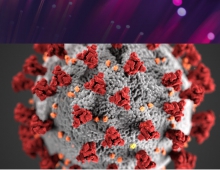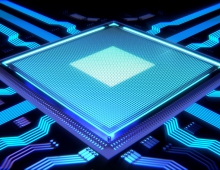
New Cray Unveils XC50 Supercomputer Can Scale to 500 Petaflops
Cray has launched the XC50, the successor to the XC40 model. The big change from the XC40 is the additional support for the new NVIDIA Tesla P100 GPUs, as well as the latest Xeon and Xeon Phi processors from Intel. The P100 expands the computational density of the XC line significantly. Each P100, offers about 5 peak petaflops of double precision performance -- 4.7 teraflops for the PCIe-only version and 5.3 teraflops for the NVLink version. As a result, the company says a single XC50 cabinet can now deliver up to a petaflop of peak performance. Such a configuration would require all the nodes in that cabinet to be outfitted with the higher performing P100.
Most of the rest of the XC50 feature set is inherited from the XC40 or even previous designs. These include the Aries Dragonfly network, the Cray Linux environment, the cooling subsystem, and the optional DataWarp I/O accelerator.
The first field test of the XC50 will be the Piz Daint supercomputer, installed at the Swiss National Supercomputing Centre (CSCS). Up until recently, Piz Daint was an XC30 system. Initially deployed in 2012 with Intel Xeon processors, its initial Linpack rating was 216 teraflops. In 2013, it was upgraded with NVIDIA K20x GPUs, bringing it up to 6.3 petaflops. Recently Piz Daint was converted to an XC50, an upgrade that pushed it all the way to 9.8 petaflops.

Most of those flops are the result of the new P100 GPUs, which replaced the original K20x accelerators. Despite the addition of Cori and Oakforest-PACS in the number 5 and 6 slots on the latest TOP500 list, Piz Daint maintains it number 8 position there thanks to the XC50 upgrade. It also keeps its status as the most powerful supercomputer in Europe – at least in the Linpack sense.
One other consequence of using the more energy-efficient P100 GPUs is that the new Piz Daint, despite providing 3.5 petaflops more computing power than the previous iteration, uses less power. And not just a little less. The upgraded system draws 1,312 kilowatts when running Linpack; the K20x-accelerated version drew 2,325 kilowatts.
That would give Piz Daint an energy-efficient rating of about 7.45 gigaflops per watt. The only supercomputer greener is NVIDIA’s own DGX SATURNV, which is a cluster of DGX-1 servers, each one of which houses eight P100 GPUs. That machine delivers 9.46 gigaflops per watt.




















